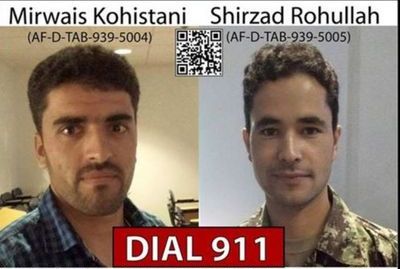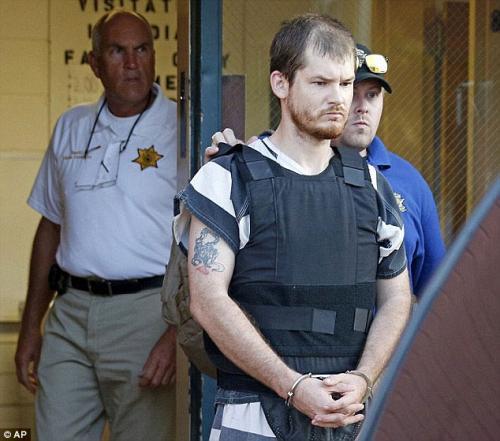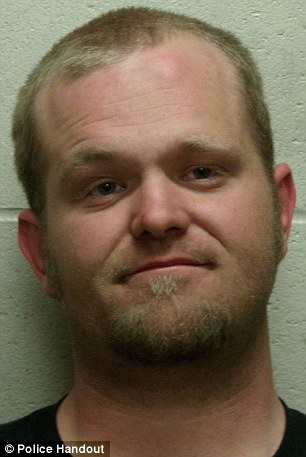
kscarbel2
Moderator-
Posts
18,896 -
Joined
-
Days Won
114
Content Type
Profiles
Forums
Gallery
Events
Blogs
BMT Wiki
Collections
Store
Everything posted by kscarbel2
-
Fleet Owner / December 14, 2015 So I am here in San Antonio TX attending the 10th annual Rush Truck Centers (RTC) Technician Skills Rodeo . This year, some 163 RTC technicians are battling it out for cash awards, prizes, and hourly raises. Interestingly, though, are the twelve Level 1 and 2 technicians competing in an event RTC put together for the very first time this year; an event Mike Besson, managing VP of service operations and customer solutions, is aimed at bolstering retention within RTC’s technician ranks. “The biggest thing is retention now; my whole focus for 2016 is to reduce turnover,” Besson explained to me. “We’re finding that most technician turnover occurs among Level 1-3 techs; the average guy stays less than a year. But if you can keep that Level 1-3 for three years – if you can get them over that hump – then you’ve got them and can really grow them.” He also noted that the average age among truck technicians is 43 and that “graying” of the workforce is a problem, much like it is among the truck driver population, but for different reasons. In Besson’s view, it’s not just about bringing “younger people” into the truck technician field; it’s also about how to transition the “seasoned” Level 3-5 techs into leadership roles within RTC’s service organization. “We’ve set up a mentor program with a twist to help us develop a seasoned leadership corps,” he pointed out. “Not only do the veteran techs serve as mentors to the Level 1-2 guys, those Level 1-2 folks also grade their mentors on leadership and teaching skills – they grade each other.” Yet such efforts don’t just apply to folks in the shop bays working directly on trucks, engines, transmissions, and the like, for building capability, experience, and retention is also key on the parts support side of the shop ledger, Whitt Michael, VP of the parts operations at Rush Enterprises, told me. “The parts guys work in tandem with the technicians; they need to be just as computer savvy and pay just as much attention to detail to parts as the technicians do to trucks,” he explained. “We need strong parts personnel working that back counter to enable technicians to do their jobs better.” Michael noted that this is the second year RTC has held a parts-focused competition along with the main technician challenge and more parts personnel took and passed the first-round testing to make it to the San Antonio event this year compared to 2014. And if you think this is all just a big party where attending technicians get to sit back and relax with friends, you need to talk with some of the veteran competitors like Dustin Ebert out of RTC’s Phoenix shop. “I’m here to win and win it all; that is my mindset every year,” he told me. “And this is not easy; we’re getting 45 minutes to solve problems that usually take us 4 to 5 hours back in the shop. These are very hard problems and the competition is intense.” Ebert, the Rodeo’s grand champion back in 2007, is trying this year to be one of the first RTC technicians to win in both the heavy- and medium-duty divisions; a far from easy task, but one he thinks is possible. “I’m a very visual person so that helps me in figuring out these diagnostic challenges sometimes,” he explained. “You might have two trucks with the same fault code, the exact same electronic problem, but in one case it’s a push-pin issue while in the other it’s a severed wire," Ebert said. "So I’m always looking to see if there is something out of place; that can be the key in many issues.” The highly-electronic nature of today’s trucks also plays to Ebert’s particular problem solving skill set, and it’s also why much of the “wrench turning” needed in truck maintenance is really being relegated to the Level 1-2 technicians. “The really difficult part is the diagnostics; only after you get that figured out is when you replace a component, if needed,” he said. We’ll find out in a few days if Ebert’s skill set will carry him back to the winner’s circle, this time in the medium-duty division.
-
This week is big, with oil prices crashing, China decoupling the Yuan from the dollar and the Fed's Yellen expected to announce a rate increase tomorrow which could destabilize much of the world (due to their current circumstances).
-
Car & Driver / December 14, 2015 Replica automakers that sell fully assembled cars no longer have to abide by federal safety standards, according to a section in the 490-page highway bill that passed this month. Replicas and restomods—such as those built by Singer and Icon—are officially exempt from costly certification standards relating to crash tests, child-seat anchors, and all the other requirements laid out in the Federal Motor Vehicle Safety Standards (FMVSS) that have regulated all production cars since the 1960s. Previously, this was a somewhat gray area, as kit builders (such as Local Motors) never needed to meet requirements since they did not officially assemble the vehicles. Other companies acting as tuners and using a donor car’s VIN—despite a complete mechanical and cosmetic overhaul that would otherwise make it a new vehicle—can now fabricate their own cars from scratch so long as they represent a licensed design that’s at least 25 years old. The law allows each manufacturer to sell 325 replicas each year. But while airbags, crumple zones, and other modern technologies don’t have to be on board, a brand-new EPA-certified engine must be under the hood (no old flat-sixes or other polluting nonsense, says Uncle Sam). Also, buyers must be notified of the safety exemptions, and various labels need to be affixed to the door jams, etc. The laws apply to any low-volume manufacturer that produces fewer than 5000 cars worldwide each year. So, technically, after Ferrari separates from Fiat-Chrysler, we could see brand-new GTOs and Dinos that don’t have to give a damn about the rule book. Watering down resale values and the provenance of its most prized cars might not be something Ferrari wants to do, but this sort of dream is finally, legally possible.
-
Oil prices drop towards 11-year lows on worsening glut Reuters / December 14, 2015 Oil prices fell for a seventh straight session on Monday, coming close to 11-year lows, on growing fears that the global oil glut would worsen in the months to come in a pricing war between leading OPEC and non-OPEC producers. Brent crude LCOc1 fell by 3.4 percent to below $36.70 a barrel for the first time since December 2008 and U.S. West Texas Intermediate (WTI) CLc1 sank 2.5 percent below $34.70 a barrel. Brent traded less than 50 cents above the lows last seen during the 2008 financial crisis of $36.20 a barrel. If Brent falls below that level, that will be its lowest since mid-2004, when talk of a commodity super-cycle was only beginning. WTI's financial crisis low was $32.40 in December 2008. "Oil is coming under pressure as the lack of OPEC cuts mean incessant oversupply continues," said Amrita Sen from Energy Aspects think tank. Both benchmarks have fallen every day since the Organization of the Petroleum Exporting Countries on Dec. 4 abandoned its output ceiling. In the past six sessions, they have shed more than 13 percent each. OPEC has been pumping near record levels since last year in an attempt to drive higher-cost producers such as U.S. shale firms out of the market. New supply is likely to hit the market early next year as OPEC member Iran ramps up production once sanctions are lifted as expected following the July agreement on its disputed nuclear programme. "All new production will be earmarked for exports," BMI Research said in a note. "In addition to volumes released from storage, Iran will be able to increase crude oil and condensates exports by a maximum of 700,000 b/d by end-2016," it said. Iran's crude oil exports are set to hit a six-month high in December as buyers ramp up purchases in expectation that sanctions against the country will be lifted early next year, according to an industry source with knowledge of tanker loading schedules. Iranian news agency Shana quoted on Monday manager director of Iran's Central Oil Fields Company, Salbali Karimi, as saying Iran's cost of production stood $1-$1.5 per barrel, in a clear indication it would ramp up output in any price scenario. Gulf producers and Russia have previously said they would not cut output even if prices fell to $20 per barrel. On Friday, the International Energy Agency (IEA) that the global supply glut was likely to deepen next year and put more pressure on prices. But it said it didn't believe the world would run out of storage capacity [EIA/] OPEC supply is likely to increase by 1 million bpd next year, Morgan Stanley analysts said in a research note Monday. "Almost the entirety of added supplies in 2016 will come from Iran, Iraq and Saudi," it said.
-
The Financial Times / December 14, 2015 Oil is close to surpassing the lows hit during the financial crisis amid increased expectations of a persistent oversupply in global crude. Brent crude dropped $1.60 to $36.33 a barrel — the lowest in seven years. The global benchmark dropped for its seventh consecutive trading session, edging closer to the December 2008 intraday low of $36.20 a barrel. If Brent falls below this, it will hit a level last seen in the middle of 2004. “The year is ending on an uncomfortable note. The smell of fear is back in the air,” said David Hufton at London-based broker PVM. The US market benchmark, West Texas Intermediate, sunk $1.09 to $34.53 a barrel — the lowest since February 2009. WTI traded at $32.40 a barrel in 2008. Oil prices have tumbled since the meeting of Opec ministers at the start of the month. Brent has plunged 17 per cent while WTI is down 16 per cent. Discord within the group on which members should make production cuts to shore up the price, led to the continuation of Opec’s existing policy to keep on pumping. In addition, the group scrapped its official production ceiling, taking away any support for the oil price. “The Opec meeting has removed any last hopes of a reprieve for oil and it has added another layer of downside sentiment to commodities in general. The dam has collapsed and prices are in free fall, with devastating consequences,” said Mr Hufton. Despite weakening production growth outside of Opec, members of the producers’ group have ramped up output in the face of lower oil prices. Iraq and Saudi Arabia have pumped at record levels this year, while oil market participants are eyeing additional barrels from Iran when sanctions linked to its nuclear programme are expected to be lifted next year. The International Energy Agency, the world’s leading energy forecaster, said oil stockpiles are expected to swell throughout next year, albeit at a slower pace than in 2015. “Gloom is nourishing gloom on the oil market,” said Carsten Fritsch at Commerzbank. The sell-off has taken on “ludicrous dimensions”, he added. A stronger dollar and money managers re-establishing their short positions were piling on the pressure, said Adam Longson, oil analyst at Morgan Stanley. “The outlook for prices appears grim,” he said.
-
Freightliner Trucks Press Release / December 11, 2015
-
NBC News / December 8, 2015 The Department of Homeland Security (DHS) has taken the lead role in the search for two Muslim Afghan airmen who have run away from Moody Air Force Base in Georgia where they were training and vanished. The two men, Mirwais Kohistani and Shirzad Rohullah, were part of a group of 23 from Afghanistan who have been at the base since February. Officials allege there is no evidence the AWOL Muslim Afghan airmen pose a threat [even though they don’t know why they disappeared]. “They’ve just gone missing. We’re not sure why,” said Air Force spokesman Ed Gulick. “It’s not the first time it’s happened so we just want to find them if we can,” said Gulick. "There is a well-coordinated process among federal agencies to locate the individuals as quickly as possible and return them accordingly to the proper authorities to manage their present situation," the Air Force said in a statement. [Only Henry Blake could get away with a line like that] The DHS has seized hours of surveillance video in connection with the disappearance of the Afghan men from Valdosta Regional Airport (30 miles from the Florida border), where the men rented a car. The missing Afghan nationals in Georgia are assigned to the 81st Fighter Squadron, which was re-activated in January and charged with training Afghan airmen. .
-
May I ask, are you interested in this CJ5 in particular, or any CJ5?
-
Reuters / December 9, 2015 An Illinois man pleaded guilty on Wednesday to plotting with his cousin, a National Guard member, to attack an Illinois military installation as part of a conspiracy to support ISIS. Jonas Edmonds was charged along with his cousin, Army National Guard Specialist Hasan Edmonds, of planning to carry out an armed attack on the military facility where Hasan Edmonds had been training in Joliet, 34 miles (55 km) southwest of Chicago. Jonas Edmonds pleaded guilty to conspiring to provide material support to a foreign terrorist organization and making a false statement to law enforcement on an offense related to terrorism. Edmonds faces up to 23 years in prison. Sentencing is scheduled on Jan. 27. Hasan Edmonds is expected to plead guilty on Monday. Jonas Edmonds has been detained in federal custody since his March 25 arrest. Hasan Edmonds was arrested at Chicago's Midway airport on March 25 as he tried to fly to Egypt. The plan was for Hasan to leave the United States and join ISIS fighters while Jonas carried out the attack. The cousins were arrested after discussing their plans with an undercover employee of the FBI. As a member of the Illinois National Guard since 2011, Hasan Edmonds reported to the Joliet base one weekend a month and performed two weeks of active duty training per year. He lived in Aurora, about 41 miles (66 km) southwest of Chicago. .
-
South Carolina seeks to execute man who murdered 5 children Reuters / December 9, 2015 Prosecutors plan to seek the death penalty against a South Carolina man who murdered his five children last year before driving their bodies across several states and dumping them in Alabama. Timothy Ray Jones Jr. faces murder charges in the September 2014 killings of his children, ages 1 though 8. On Wednesday, Eleventh Circuit Solicitor Donald Myers in Lexington County, South Carolina, told a judge he planned to seek the death sentence again Jones, 33. Jones was arrested in Mississippi on Sept. 6, 2014, after being stopped at a driver's license checkpoint. He confessed to killing his five children, ages 1 though 8, and led police to the bodies, which he had wrapped individually in trash bags and dumped in rural Alabama. Jones, who worked for Intel Corp in Columbia, had joint legal custody of the children. The children's mother, his ex-wife Amber Jones, reported them missing on Sept. 3. Detectives believe Jones killed his children about a week earlier after picking them up from school and day care. One of the children was beaten to death, and the other four strangled. .
-
Reuters / December 10, 2015 A New Jersey man pleaded guilty on Thursday to conspiring to support ISIS. Nader Saadeh, 20, is among six young men in New York and New Jersey arrested by federal authorities since June. Saadeh faces up to 15 years in prison after pleading guilty in federal court in Newark. U.S. authorities have arrested over 70 people in the last two years for suspected ties to ISIS. Saadeh expressed support for ISIS and its use of brutality and spent time viewing the group's online propaganda. He traveled to Jordan in May with the intention of making his way to either Iraq or Syria to join the group, but was detained by Jordanian authorities. His guilty plea comes after his brother, Alaa Saadeh, and another New Jersey man, Samuel Topaz, both pleaded guilty to their role in the same conspiracy. Alaa Saadeh and Topaz admitted in court they had also discussed traveling overseas to join ISIS. Federal agents have arrested three other men in the probe. Munther Omar Saleh, a college student in New York City, also talked with the Saadeh brothers and Topaz about joining ISIS. He was arrested alongside a 17-year-old in June when the two got out of their car and ran at federal agents who had been following them in a surveillance vehicle. Saleh and the teenager, who has not been identified, had discussed plans to build an explosive device to set off in New York. A U.S. judge recently granted the government's request to try the teenager as an adult. Fareed Mumuni, a New York man also accused of conspiring with Saleh, was arrested in June after he tried to stab an FBI agent executing a search warrant at his home.
-
New York Rep. Peter King: "What {White House Deputy National Security Adviser Ben Rhodes said} said about the vetting of the refugees is untrue. There is virtually no vetting cause there are no databases in Syria, there are no government records. We don't know who these people are." Florida Sen. and Republican presidential hopeful Marco Rubio: "It's not that we don't want to -- it's that we can't, because there's no way to background check someone that's coming from Syria." ------------------------------------------------------------------------------------------------------- ISIS printing genuine Syrian passports for jihadists U.S. authorities are now warning that ISIS members may have infiltrated American borders with authentic Syrian passports that ISIS has printed itself with its own machines. A 17-page Homeland Security Investigations (HSI) Intelligence Report, issued to law enforcement last week, says ISIS has been able to print legitimate-looking Syrian passports since taking over the city of Deir ez-Zour last summer, home to a passport office with “boxes of blank passports” and a passport printing machine. Another passport office was located in Raqqa, Syria, which has long been ISIS’s de facto capital. “Since more than 17 months have passed since Raqqa and Deir ez-Zour fell to ISIS, it is possible that individuals from Syria with passports ‘issued’ in these ISIS controlled cities or who had passport blanks, may have traveled to the U.S.” Testifying before lawmakers Wednesday, FBI Director James Comey first publicly revealed the nation’s top security officials’ very real anxiety over the problem. “The intelligence community is concerned that ISIS has the ability, the capability to manufacture fraudulent passports, which is a concern in any setting,” Comey said. Former Department of Homeland Security (DHS) intelligence official John Cohen said, “If ISIS has been able to acquire legitimate passports or machines that create legitimate passports, this would represent a major security risk in the United States.” Fake Syrian passports have already been discovered in Europe, most notably two used by suicide bombers in the horrific terrorist attack on Paris last month. The two men are believed to have slipped into Europe with a flood of Syrian refugees fleeing the violence in their homeland. According to the source that provided the passport information to homeland security officials, Syria is awash in fake documents. “The source further stated that fake Syrian passports are so prevalent in Syria that Syrians do not even view possessing them as illegal,” the report says. “The source stated fake Syrian passports can be obtained in Syria for $200 to $400 and that backdated passport stamps to be placed in the passport cost the same.” The report included one example in which law enforcement officials said that a Syrian passport discovered in Turkey was printed with a designator number indicating it had been printed in an ISIS-controlled area earlier this year. Recently international news outlets have reported that their journalists have been able to purchase fake Syrian passports for a few thousand dollars. The DHS report says it is unclear what state the “blank” passports stolen from Deir ez-Zour were in or if they were completely blank. It also notes that the “whereabouts of the passport machine(s) remain fluid,” since they are portable. The HSI report’s last page contains a warning: “If ISIS ability to produce passports is not controlled, their operations will continue to increase and expand outside of their operational controlled areas.”
-
Hino Australia / December 10, 2015 Hino Australia CEO and Chairman Steve Lotter presented the Sydney-based Lovatt Transport with the 100,000 Hino truck in Australia. The 700 Series prime mover is the largest truck in the Hino range, and Lovatts now has the largest fleet of 700 Series trucks in Australia.
-
Paul, it may not be true today, but sadly, it could be in the future. I’m very concerned about today’s good kids, about what kind of a world they will grow old in. ----------------------------------------------------------------------------------------------------------------------------------------- Why Muslims are the world’s fastest-growing religious group Pew Research Center / April 23, 2015 The expected growth of Islam around the world is perhaps the most striking finding in the recent Pew Research Center report projecting the future of religious groups. Muslims will grow more than twice as fast as the overall world population between 2010 and 2050 and, in the second half of this century, will likely surpass Christians as the world’s largest religious group. While the world’s population is projected to grow 35% in the coming decades, the number of Muslims is expected to increase by 73% – from 1.6 billion in 2010 to 2.8 billion in 2050. In 2010, Muslims made up 23.2% of the global population. Four decades later, they are expected to make up about three-in-ten of the world’s people (29.7%). By 2050, Muslims will be nearly as numerous as Christians, who are projected to remain the world’s largest religious group at 31.4% of the global population. The main reasons for Islam’s growth ultimately involve simple demographics. To begin with, Muslims have more children than members of the seven other major religious groups analyzed in the study. Each Muslim woman has an average of 3.1 children, significantly above the next-highest group (Christians at 2.7) and the average of all non-Muslims (2.3). In all major regions where there is a sizable Muslim population, Muslim fertility exceeds non-Muslim fertility. The growth of the Muslim population also is helped by the fact that Muslims have the youngest median age (23 in 2010) of all major religious groups, seven years younger than the median age of non-Muslims (30). A larger share of Muslims will soon be at the point in their lives when people begin having children. This, combined with high fertility rates, will accelerate Muslim population growth. More than a third of Muslims are concentrated in Africa and the Middle East, regions that are projected to have the biggest population increases. But even within these high-growth regions – as well as others – Muslims are projected to grow faster than members of other groups. For example, Muslims in sub-Saharan Africa, on average, are younger and have higher fertility than the overall population of the region. In fact, Muslims are expected to grow as a percentage of every region except Latin America and the Caribbean, where relatively few Muslims live. The same dynamics hold true in many countries where Muslims live in large numbers alongside other religious groups. For example, India’s number of Muslims is growing at a faster rate than the country’s majority Hindu population, and is projected to rise from 14.4% of India’s 2010 population to 18.4% (or 311 million people) in 2050. And while there were roughly equal numbers of Muslims and Christians in Nigeria as of 2010, Muslims have higher fertility there and are expected to grow to a solid majority of Nigeria’s population (58.5%) in 2050. Meanwhile, religious switching, which is expected to hinder the growth of some other religious groups, is not expected to have a negative net impact on Muslims. By contrast, between 2010 and 2050, Christianity is projected to have a net loss of more than 60 million adherents worldwide through religious switching. .
-
Transport Engineer / December 10, 2015 Supermarket chain ASDA has taken delivery of 124 Vector 1950 MT trailer refrigeration units, from Carrier Transicold, following the success of 20 Gray & Adams double-deck trailers using the same fridges that went into service in 2014. Sean Clifton, senior manager for national fleets at Asda, says that another key to ASDA’s selection of Carrier Transicold was the firm’s proven service standards for more than 700 existing units already operated by the supermarket. In the first six months of 2015, Carrier Transicold’s network completed 100% of all scheduled maintenance on time, including managing ASDA’s F-Gas regulatory compliance across its Carrier-badged fleet. Asset availability during the same period averaged 99.54%, he confirms, demonstrating consistently high levels of uptime. “Environmental performance, cold chain protection and fleet uptime are three of the biggest considerations when specifying new fridge units for our fleet,” comments Clifton. “The Vector systems deliver in all of these areas; put simply, they don’t give us any issues.” The latest Vector 1950 MT units are being mounted to 118 Schmitz Cargobull 13.6-metre dual-compartment reefers, which will operate with full-width 2,200mm evaporators at the rear for maximum cold chain performance. Six Cartwright dual-compartment urban trailers complete the order, which will be used for deliveries to stores in city centres. Al have been configured to integrate with ASDA’s fleet telematics system. ASDA selected the Vector 1950 MT units for their rapid pull-down speed, precise temperature control and their E-Drive all-electric technology, which – together with a microchannel heat exchanger – enables each unit to operate with up to 15% reduced refrigerant charge compared to the units they replace. The new units have been supplied with everCOLD flexible, full-service R&M packages, which include on-site servicing carried out by manufacturer-trained technicians from the Carrier Transicold network. Annual temperature control testing and certification, F-Gas regulation compliance and access to Carrier’s new oneCALL 24/7 incident management service is also included. FYI: Wal-Mart operates as ASDA in the UK. Wal-Mart acquired long-time grocer ASDA in 1999. .
-
Daimler Press Release / December 10, 2015 Barsan Global Logistics has expanded its fleet with 450 new Mercedes-Benz Actros 1841 4x2 tractors. The “lowliner” tractor, produced at the truckmaker’s Wörth plant in Germany, is equipped with a low frame, and pneumatic suspension front and rear. The sale marks Mercedes-Benz’s largest deal ever in Turkey. "Our greatest compliment is customer satisfaction. I am proud that we are now reinforcing the Barsan Global Logistics Fleet with another 450 Mercedes-Benz Actros 1841 and are thus registering a new record in our company history ", said Süer Sülün, Head of Sales & Marketing at Mercedes-Benz Turkey. "In addition to the low operating costs and low fuel consumption the powerful engines of the Mercedes-Benz Actros were decisive for our purchase decision", said Cengiz Çaptuğ, Chief Executive Officer of Barsan Global Logistics. "We want to continue to expand our success with the help of Mercedes-Benz commercial vehicles." For Mercedes-Benz Turkey it is not the first major order of this dimension in the current year. Just in the spring of this year, the transport company İmza Lojistik has taken over 400 Mercedes-Benz Actros 1844. About Mercedes-Benz Turkey and the Turkish Truck Market Mercedes-Benz Turkey was founded in Istanbul in 1967 and started production of buses for the Turkish market in 1968. Mercedes-Benz Turkey has been producing trucks in the Aksaray Plant located 230 km east of the capital city of Ankara since 1986. The present product range of the Turkish plant includes the Actros, as well as the Axor, Atego and Unimog. The ISO-certified Aksaray Plant employs around 1,700 employees. Mercedes-Benz has been the leader in Turkey’s heavy truck market for over 10 years. Turkey is one the biggest sales markets for Mercedes-Benz . In 2014, Mercedes-Benz Trucks sold more than 18,000 units in Turkey. .
-
MAN Truck & Bus Press Release / December 10, 2015
-
Dearborn inarguably has a huge Muslim population, but that article is fake. ------------------------------------------------------------------------------- City of Dearborn Responds to Satirical 'Sharia Law' Article Dearborn Patch / October 30, 2013 On Sunday, a satirical website called the National Report published an article claiming that Dearborn has become the first U.S. city to "fully implement Sharia Law." The story quickly made its way around the internet and it seems many people did not understand the [in bad taste] joke. According to the City of Dearborn, city hall employees have received multiple phone calls from people asking whether the story is true. The city has responded to these questions by sending out the following press release: A satirical website called the National Report intentionally made up an article for entertainment purposes on Sunday, Oct. 27 about the City of Dearborn enacting sharia law over the weekend. The article is false; Dearborn is not under sharia law and has never at any time even considered such an action. “Dearborn has never been, nor ever will be, under sharia law. We are governed by the U.S. Constitution, the Constitution of the State of Michigan and the City of Dearborn Charter,” said Mayor O’Reilly. “We are a city named after a Revolutionary War Hero. We have lost loyal Dearborn American military service personnel in every war this country has fought to protect the individual rights we are guaranteed through the U.S. Constitution,” he said. “We are a community that proudly honors those who served our country to protect those rights. We have annual observances on Memorial Day, Flag Day, Korean War Armistice Day and Veterans Day,” said Mayor O’Reilly. The phony article appeared on the National Report, a website [allegedly] meant to be humorous, and has since been posted on other websites and circulated over the internet. “The National Report’s misguided attempt at humor furthers the goals of some people who have tried to suggest that the City of Dearborn is anti-American because our population includes residents who are Muslim,” said Mayor O’Reilly.
-
Feds Arrest 'Emir' of ISIS Recruitment Effort in Minnesota ABC News / December 10, 2015 The FBI-led Joint Terrorism Task Force has arrested a Minnesota man for leading an effort inside the United States to send others to join ISIS in Syria. Abdirizak Mohamed Warsame,20, was arrested Wednesday night and charged with conspiring to provide material support to a terrorist organization. He is among over 10 people from Minnesota's Somali-American Muslim community who began planning to join ISIS more than a year ago. Nine have now been arrested, and one -- 18-year-old Abdi Nir -- made it to Syria, where since May 2014 he has been recruiting and assisting others inside the United States to join ISIS. Warsame’s arrest comes several months after a round of arrests in the case. Warsame and others began watching propaganda videos together in the spring of 2014, when they also began talking about how to get to Syria. At one point, when one of the leaders of the group was planning to leave for Syria imminently, Warsame was appointed “emir” of the effort, and he subsequently began encouraging and helping others plan to join ISIS. Warsame and Nur considered robbing people to pay for travel to Syria, but Nur rejected the idea and said they should steal from the government instead, prosecutors allege. Warsame called Nur “a genius. Nur described risks involved in the entire effort this way to Warsame: “It’s like playing a game of chess, bro. One thing you move you can be in danger, or you could win.” Warsame is one of 90 people from inside the United States identified by the FBI as having been inspired to take action on behalf of ISIS. .
-
Germany's Merkel has gone out of her way to welcome a million refugees, a high percentage of them being Muslims. Now, Germany is allowing the Muslims to enact Sharia (Islamic Law) in Germany. In other European countries, there appears to be little of any "push back" from the governments there as well. Shocking.
-
Oklahoma mother and boyfriend arrested for rape and murder of 4-year-old Associated Press / December 10, 2015 An Oklahoma couple has been arrested for the rape and murder of their woman's four-year-old daughter. Deputies had been alerted just after midnight on Nov. 15 by a hospital in Owasso saying a 4-year-old child had been presented to the hospital unresponsive. She was later pronounced dead at the hospital. Washington County Sheriff's deputies arrested 26-year-old Courtney Le'ann Hansche and her boyfriend, 27-year-old Michael Nordbye Tuesday on charges stemming from the death of her 4-year-old daughter, Jaydenn Hansche. Courtney Hansche was arrested on charges of murder in the first degree, rape by instrumentation, child abuse and child neglect. Michael Nordbye was arrested on charges of murder in the first degree, rape by instrumentation and child abuse. The arrests come following 'an intensive investigation' conducted by the Washington County Sheriff's Office investigators, Washington County District Attorney's Office and the OSBI. The manner of death is listed as homicide by the Oklahoma State Medical Examiner's office. Their bond has not been set and they are being held in Washington County Jail. .
BigMackTrucks.com
BigMackTrucks.com is a support forum for antique, classic and modern Mack Trucks! The forum is owned and maintained by Watt's Truck Center, Inc. an independent, full service Mack dealer. The forums are not affiliated with Mack Trucks, Inc.
Our Vendors and Advertisers
Thank you for your support!





















